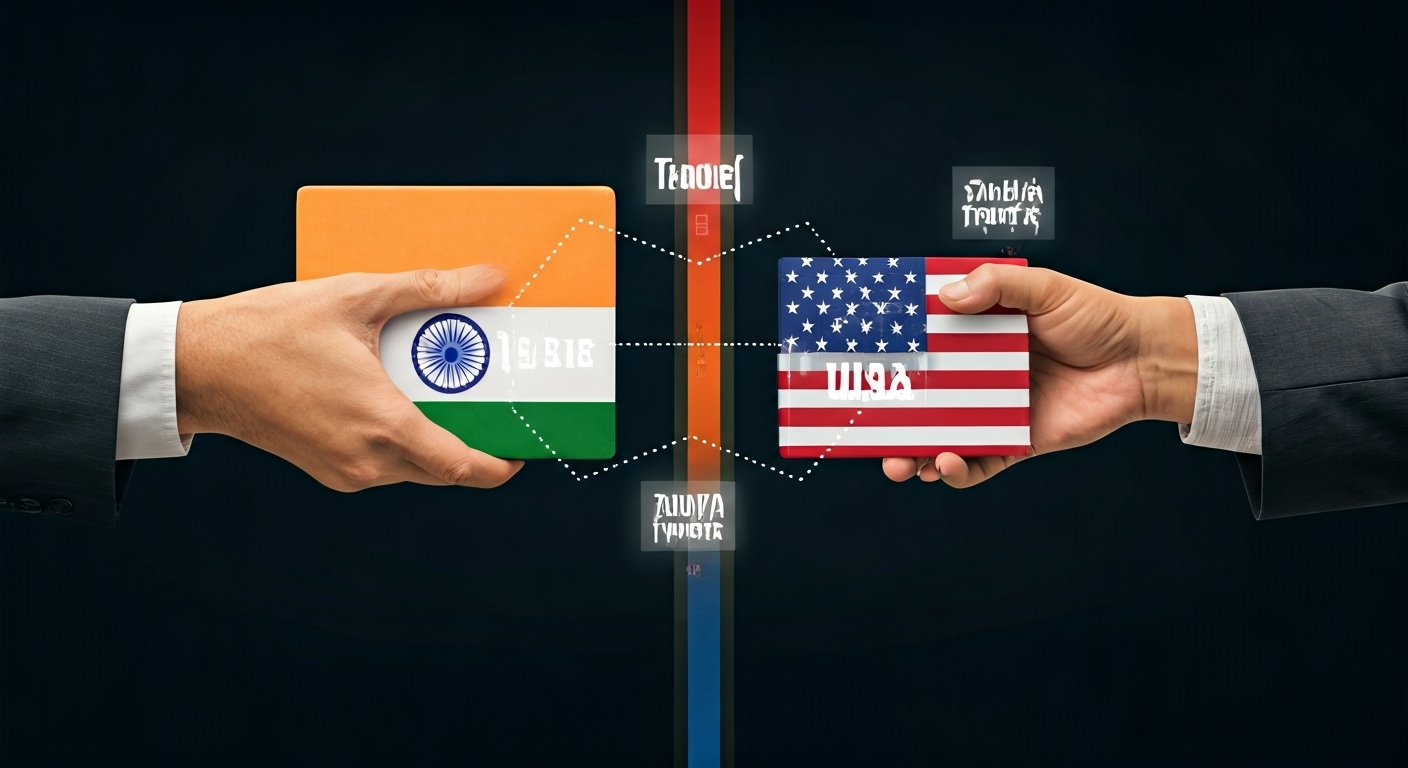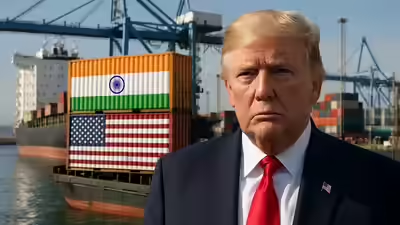
Key Highlights
- President Donald Trump has doubled tariffs on Indian goods, raising the total U.S. import duty to 50%—the highest among major trading partners in the latest tariff news.
- The White House cited India’s ongoing purchases of Russian oil as the main reason for these additional tariffs.
- Key Indian export sectors, including pharmaceuticals, textiles, and military equipment, will face major impacts. Trade talks between the U.S. and India stalled over disagreements on agriculture and energy security. Higher tariffs are expected to raise prices for American consumers and disrupt global supply chains. Following the recent tariff hikes announced by Trump, India-U.S. trade relations are expected to become more strained. Increased tariffs may intensify trade disputes, making negotiations more difficult, and could lead both countries to seek alternative partners or implement retaliatory measures in affected sectors.
- Trade talks between the U.S. and India stalled over disagreements on agriculture and energy security.
- Higher tariffs are expected to raise prices for American consumers and disrupt global supply chains.
- India has denounced the U.S. action as “unfair, unjustified, and unreasonable,” signaling a potential escalated trade standoff.
Introduction
The latest tariff news from Washington has sent ripples across global markets. President Donald Trump has announced a dramatic increase in tariffs on U.S. imports from India, bringing the total rate to a staggering 50%. These new measures are targeted at Indian goods, sparking immediate concerns about their potential effects on businesses and consumers alike. With U.S.-India trade already under strain, this sudden escalation raises urgent questions about the future of bilateral economic ties and global commerce as a whole.
Overview of Trump’s 50% Tariff Hike on India
President Donald Trump’s recent executive order marks a significant shift in U.S. trade policy under the Trump administration, with the latest tariff news reporting a doubling of import duties on Indian goods. The White House cited India’s continued purchase of Russian oil as the primary motivation, aiming to penalize New Delhi for what the U.S. sees as undermining international efforts on Ukraine.
These additional tariffs raise the total duty on Indian imports to 50%, surpassing rates imposed on China and Pakistan. For global trade, this move signals growing tensions between major economies and adds fresh uncertainty to already delicate foreign policy dynamics.
Timeline and Key Announcements Behind the New Tariff
In the recent days leading up to the announcement, President Donald Trump delivered strong signals of impending action. On July 30, he declared a 25% tariff on Indian imports, warning of further increases if India persisted in buying Russian oil and military equipment—a move formalized soon after through an executive order from the White House. Notably, the new tariff rate pushes the total to 50%, effective 21 days after the order’s signing, as the situation surrounding national emergency with Russia continues to escalate.
The executive order outlines that goods already shipped before the implementation deadline are exempt, offering slight relief to some exporters. However, all other Indian products entering the U.S. after the de minimis deadline will face the full brunt of these tariffs.
Currently, the United States has imposed a 50% tariff on Indian imports. Sectors most affected include textiles, pharmaceuticals, and certain categories of military equipment, with specific exemptions for items like steel and aluminum that were already subject to previous sector-specific tariffs.
Products and Sectors Most Impacted by the Increase
The new 50% tariff affects a broad spectrum of Indian goods. Among the hardest hit are pharmaceuticals, textiles, and machinery—products that have traditionally been strong performers in U.S. pharmaceutical imports from India. The pharmaceutical sector faces particular challenges, as President Trump has signaled steep tariff hikes for drug imports, potentially escalating to 250% in the future.
Military equipment and some technology goods have also been targeted, while previous sector-specific exceptions, such as for steel and aluminum, remain in effect. The impact of these higher tariffs is expected to ripple across supply chains, especially where Indian inputs are critical.
| Product/Sector | Previous Tariff (%) | New Tariff (%) | Notes |
|---|---|---|---|
| Pharmaceuticals | 25 | 50-250 | Potential for future sector-specific hikes |
| Textiles & Apparel | 25 | 50 | Major Indian export, now less competitive |
| Machinery | 25 | 50 | Includes electronics and light industrial goods |
| Military Equipment | 25 | 50 | Focus on dual-use and defense-related items |
| Steel & Aluminum | 10-25 | 10-25 | Exempt from new hikes, covered by previous tariffs |
| Agricultural Products | 25 | 50 | Includes seafood, spices, and processed foods |
As a result, both U.S. and Indian businesses face new hurdles in supply management and pricing.
Reasons Behind the U.S. Tariff Escalation on India
Several core factors led to this sharp escalation. The White House claims the move is rooted in protecting U.S. national security interests and foreign policy, arguing that India’s Russian oil purchases help fund the ongoing war in Ukraine. President Donald Trump stated that imposing additional tariffs was essential to prevent American interests from being compromised.
At the same time, the collapse of trade talks between the two nations further fueled the decision. India’s insistence on safeguarding its own national interest—particularly on energy security—became a breaking point in the negotiations.
India’s Russian Oil Trade and Its Role in Recent Policies
India’s relationship with Russian Federation oil has come under intense scrutiny in recent weeks. Despite repeated U.S. warnings, India maintained steady imports from the Russian Federation to secure energy resources for its 1.4 billion people. The White House claims these purchases directly undermine efforts to pressure Russia over the Ukraine conflict, asserting, “It is unacceptable for India to continue funding this war by buying oil from Russia,” according to Trump aide Stephen Miller.
From Washington’s perspective, these transactions justify the additional 25% penalty, raising the total tariff to 50% on Indian goods. For global trade, this move signals a new phase where energy security decisions, including Russian oil imports, can trigger significant trade repercussions. India, meanwhile, argues its actions are in line with market factors and that other major economies—including the European Union—also engage in substantial Russian energy trade, highlighting a perceived double standard in U.S. policy.
Breakdown of Collapsed India-U.S. Trade Negotiations
Trade talks between the government of India and the United States unraveled over persistent disagreements. Negotiations, which began last year, aimed for a major trade deal involving reduced tariffs and better access for American agriculture. However, India resisted U.S. demands to open its sensitive agriculture sector, citing economic security and the interests of domestic farmers.
As discussions stalled, President Trump accused India of being a “very big tariff abuser” and not acting as a good trading partner. The deadlock on trade deficit issues and market access for U.S. goods drove frustration in Washington. In response, the White House chose to escalate the dispute, using tariffs as leverage. The failure to secure common ground on these contentious topics played a direct role in the imposition of the latest additional tariffs.
Impact of Higher Tariffs on U.S. and Indian Consumers & Businesses
Higher tariffs will have swift consequences for both American consumers and Indian exporters. For shoppers and companies in the U.S., expect to see higher prices on a wide range of Indian imports, from pharmaceutical products to textiles. The new costs will ripple through supply chains, potentially leading to delays and scarcity on certain goods.
Indian businesses, meanwhile, must contend with reduced competitiveness in the American market, which threatens export earnings. Both economies face increased uncertainty as market factors shift in response to ongoing tariff hikes.
Effects on Pricing, Supply Chains, and Market Access
The 50% tariff rate on Indian goods is set to reshape pricing, supply chains, and overall market access in both countries. U.S. companies relying on Indian pharmaceuticals or apparel may need to raise prices or source alternatives, directly affecting American consumers.
Supply chains could become more fragmented and less efficient. Delays, increased paperwork, and higher costs will test even the most resilient businesses. Access to crucial Indian goods, such as generic medicines and specialty textiles, may become restricted.
- Expect higher prices on everyday items, especially medicines and clothing, as importers pass on added costs.
- Supply chains will be forced to adapt, with many businesses seeking alternative suppliers or production partners outside India.
- Market access for Indian exporters in the U.S. will narrow, threatening long-term relationships and revenue streams.
The global economy could experience ripple effects as other nations respond to evolving U.S. trade policies.
Strategic Industry Responses and Adaptation Measures
Industries on both sides of the tariff divide are already strategizing responses. Indian exporters are exploring new markets beyond the United States, while U.S. businesses may push for domestic alternatives or greater diversification in sourcing. Adaptation is crucial as supply chains realign in response to higher duties and shifting market factors.
Some sectors, especially pharmaceuticals, are lobbying for exemptions or seeking to negotiate prices to maintain U.S. market share. Multinational corporations are reassessing risk and recalibrating investment strategies.
- Indian industries are actively scouting for alternative export markets and exploring efficiency upgrades to offset new costs.
- U.S. companies in the import-heavy sectors are accelerating the search for substitute suppliers, potentially from Southeast Asia or Latin America.
- Both governments may increase support for affected sectors, easing the transition with incentives, subsidies, or streamlined regulatory processes.
These moves are shaping the evolving landscape of India-U.S. trade relations following Trump’s tariff hikes.
Comparing U.S. Tariffs on India with Those on Other Countries
When evaluating the new tariffs on Indian goods, it’s clear the United States has adopted a harsher stance compared to other major trading partners. The 50% tariff on India exceeds those currently imposed on dozens of countries, including China, Canada, and members of the European Union.
This approach signals that Washington is treating India’s case as unique, especially in light of its ongoing Russian oil trade. In contrast, Canadian goods and European products face lower rates, hinting at differing priorities and strategies in U.S. foreign policy.
Lessons from Past Tariffs on China, Canada, and Global Implications
Past decisions by President Donald Trump to impose tariffs have had far-reaching effects on trade partners and consumer prices in the United States, as evidenced by weak jobs numbers. During the earlier trade war with China, retaliatory tariffs led to increased costs on electronics, machinery, and household products, while American farmers lost access to lucrative Chinese markets.
Canada also responded to U.S. tariffs with its own duties, affecting everything from steel to agricultural goods. These episodes underscore how abrupt tariff hikes disrupt global economic growth and prompt strategic realignments.
- U.S. tariffs on China sparked a tit-for-tat trade war, raising prices for American businesses and consumers alike.
- Canadian retaliatory tariffs hurt U.S. exports of steel, aluminum, and agricultural products.
- Global supply chains became more fragmented as companies moved sourcing away from targeted countries.
- Trade partners increasingly seek alliances and alternative markets to reduce exposure to sudden U.S. policy shifts.
The new 50% tariff on India could prompt similar global reactions, intensifying trade realignments and uncertainty.
Conclusion
In summary, the recent escalation of tariffs imposed by Trump on India to 50% marks a significant shift in U.S.-India trade relations. This decision carries profound implications for both nations, affecting pricing, supply chains, and market access across various sectors. As businesses begin to navigate these changes, understanding the nuances of this tariff hike is crucial for strategizing future operations. Consumers will also feel the impact, making awareness of these developments essential. Staying informed will enable you to make better decisions in this evolving economic landscape. For further insights and updates on tariffs and their implications, be sure to subscribe to our newsletter!
https://economictimes.indiatimes.com/news/economy/foreign-trade
https://www.cnn.com/2025/07/31/tech/apple-earnings-iphone-china-ai
https://www.cnn.com/2025/08/01/politics/polling-tariffs-trump-analysis
